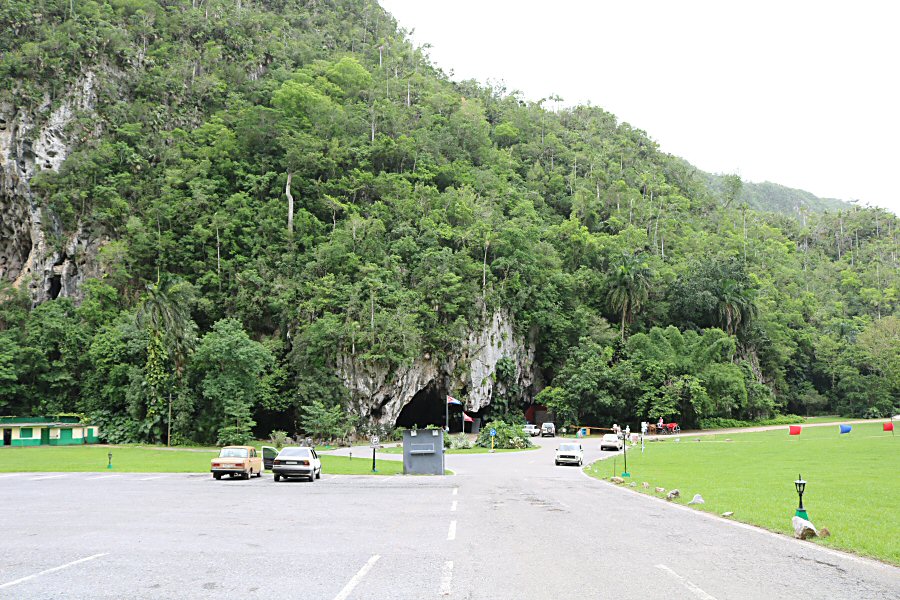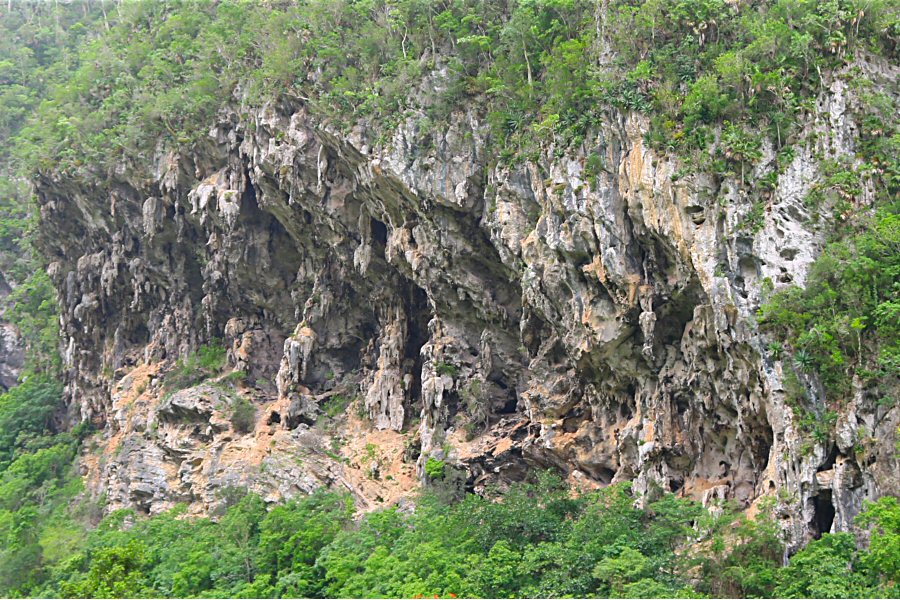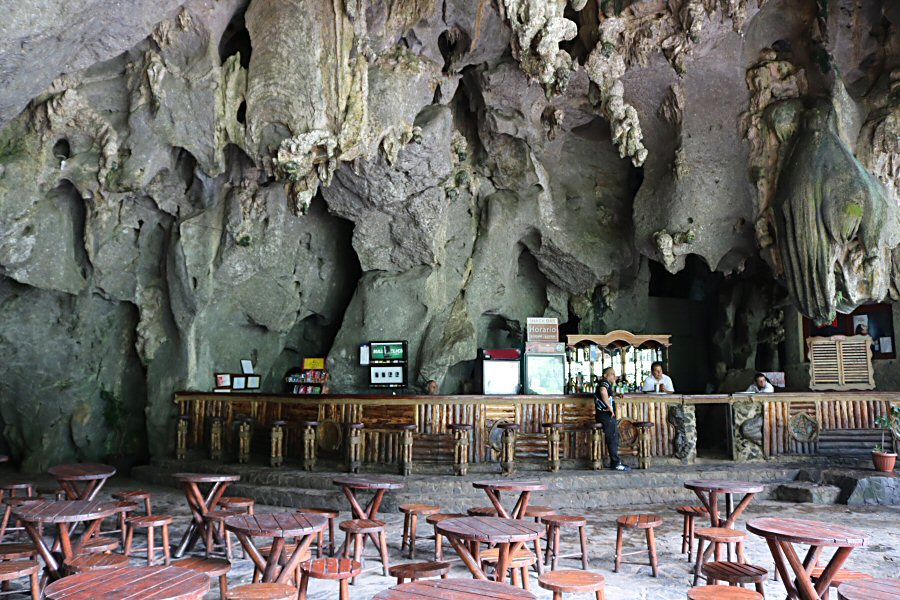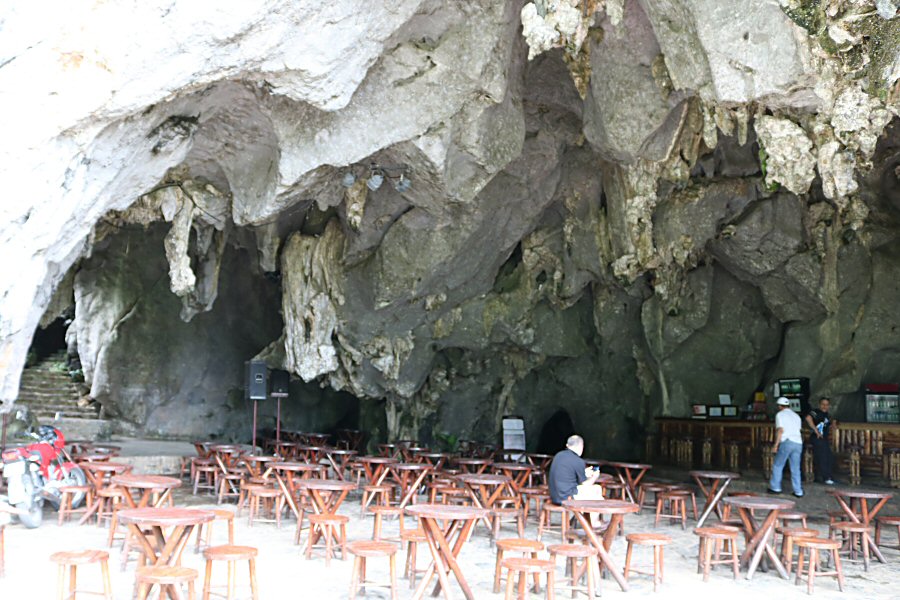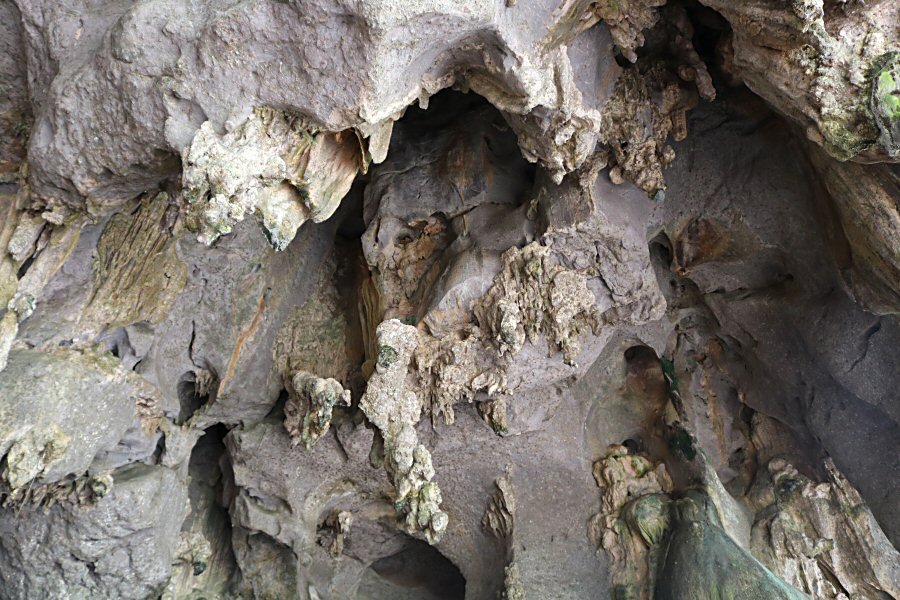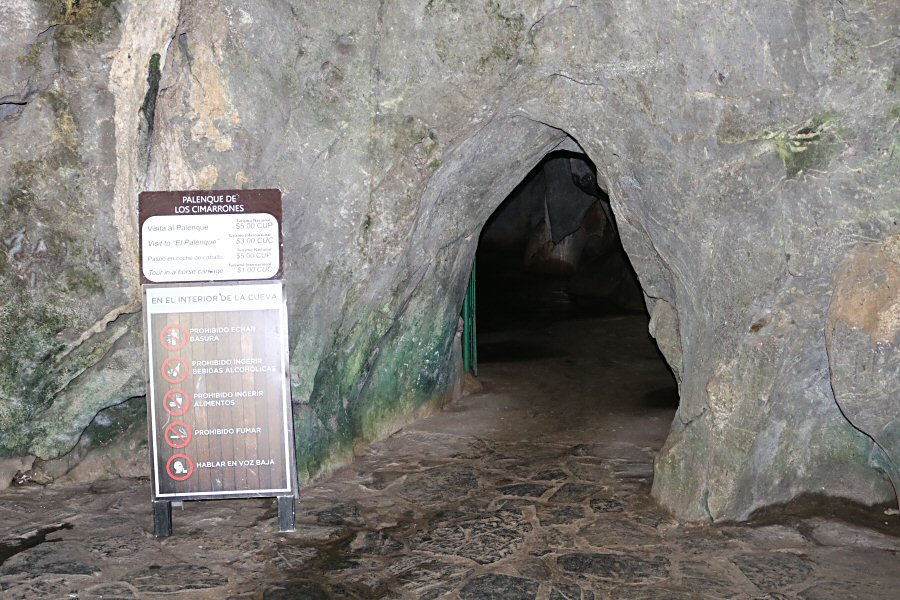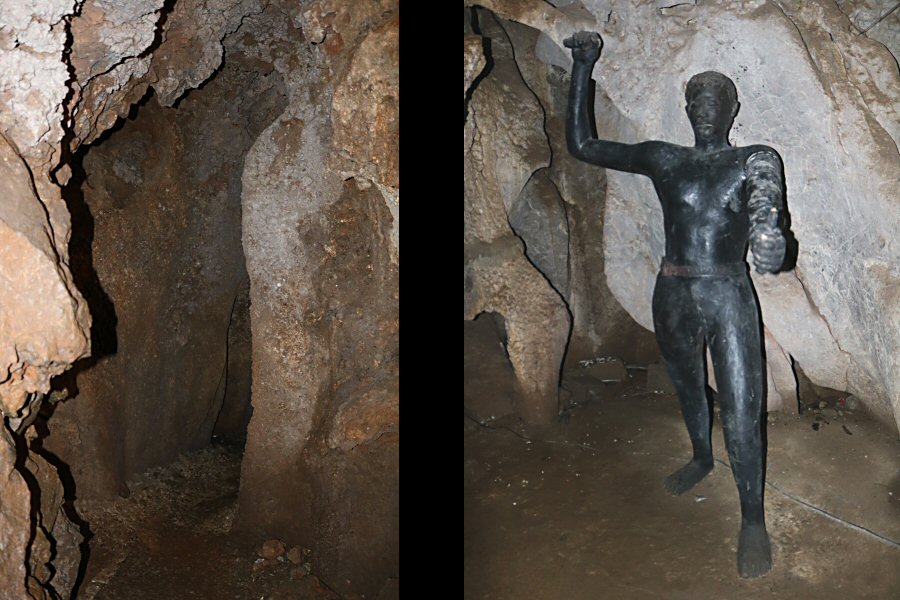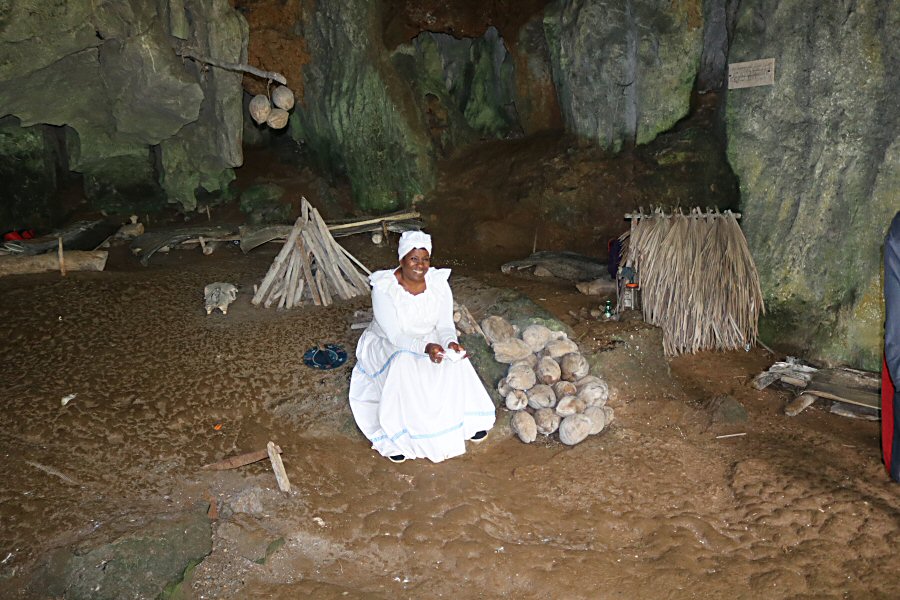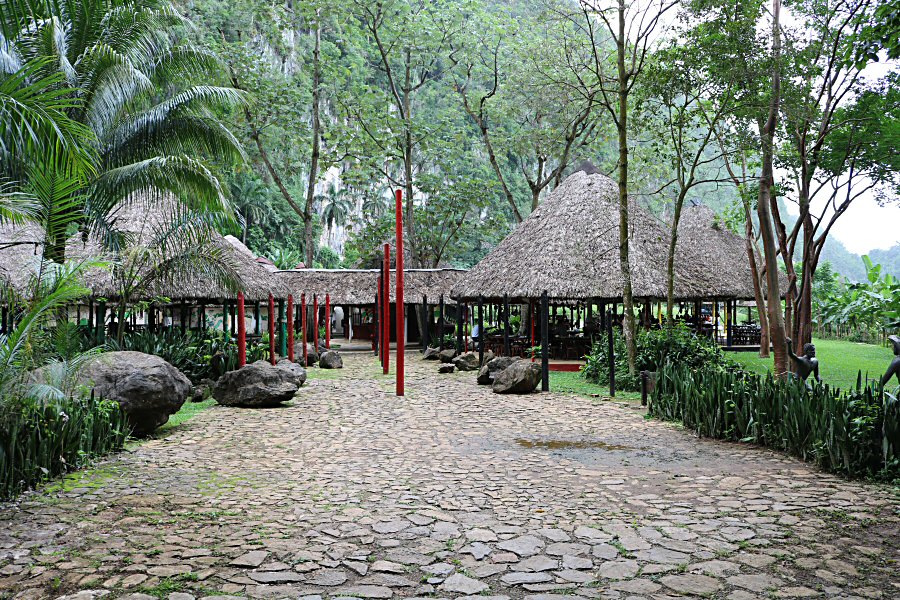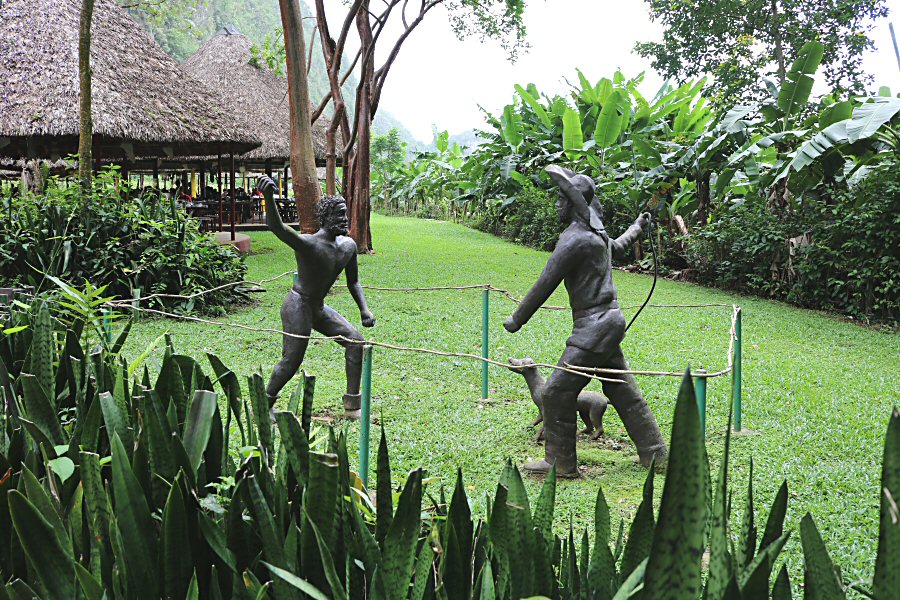Localization
Cueva de San Miguel is located on the road between Pinar del Rio and Viñales, 6km north of Viñales.
Opening Hours
every day 09:00 - 00:20
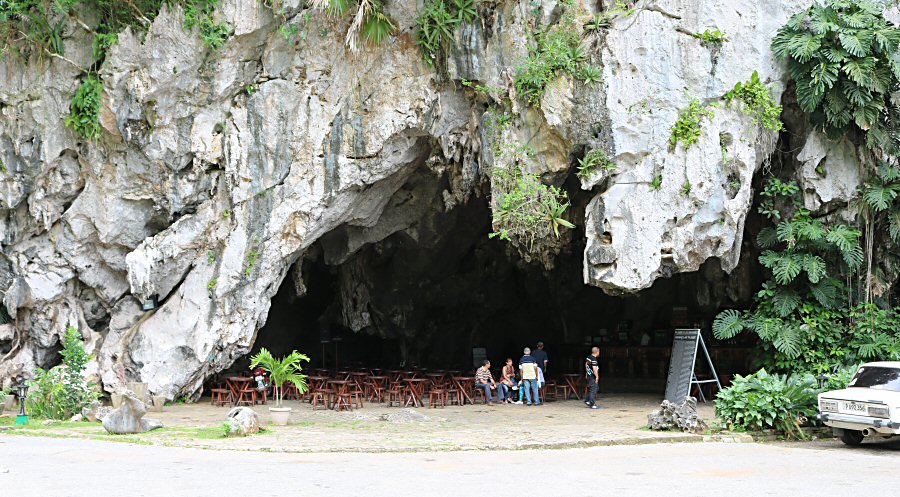

San Miguel Cave is a karst cave in the north of the Viñales Valley, in the so-called San Vicente Valley, approximately 2 km south of the more touristically developed Cueva del Indio. Karst is a topography formed from the dissolution of soluble carbonate rocks such as limestone and dolomite. It is characterized by features like poljes above and drainage systems with sinkholes and caves under the ground. The polje is a flat-floored depression in a karstic region, especially in Slovenia, with steep enclosing walls.
The area is dominated by stalactites.
In the past, the cave served as a refuge for indigenous people in pre-Columbian times, and in colonial times as a refuge for black slaves who had managed to escape.
At the entrance to the cave there is a restaurant and bar. The venue, which is an ordinary bar during the day, turns into a noisy nightclub after 22.30 on all days except Sunday nights.
Inside the cave after the bar a natural, narrow pass is formed in limestone rocks between two Sierra mountain ranges called Guasasa and Viñales. It disappears into the rock and emerges after just 50 m, leading you directly to the entrance of a restaurant, El Palenque de los Cimarrones whic serves mostly tourists. You pay extra to investigate this corridor in the rock.
This pass, called Puerto de Ancon (Ancon Gate), was used by indigenous people to escape and hide themselves from the Spanish during the conquest of the territory and by the African slaves to escape and hide themselves from the Spaniards in the colonial times. It takes about 4-5 minutes to go through the tunnel. At the exit, there is a reenactment of how the runaway slaves lived in ancient times.
Do not miss the opportunity to taste the lunch (the fried chicken and the dessert of cheese and marmalade), served with the accompany of music and a folkloric show. Rumor has it that the food was prepared using the same methods used by runaway slaves in their time, with the typical ingredients of Cuban cuisine prepared in the pure Creole style.
The name of this complex, consisting of the passage and the restaurant is El Palenque de los Cimarrones.
Palenque means “bounded, protected area”. Cimarrones is a word that entered the language thanks to the White Man and means “runaway slaves”. Throughout history, there have been many settlements established by people who escaped from slavery in both American continents. Runaways established a life for themselves in these regions, far from the public eye, especially the rancheadores, the runaway slave hunters. These runaway slaves were called Maroon, as if they belonged to a different, new tribe.
